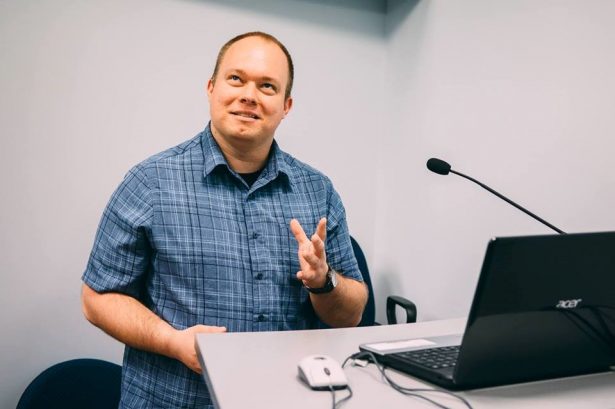
Aditya Voleti, 2011-2012, India (orange umbrella), joins some IIT-Bombay students in doing some monsoon exploration of the mountains of Matheran surrounding the city of Mumbai, India
My Fulbright year can be described as the culmination of all the disparate strands of my academic career and personal identity. I was an Indian-American double-major in Mathematics and Sanskrit; so it made sense to go to Mumbai (also known as Bombay) and live for a year as an American expatriate in India translating Sanskrit mathematical texts into English.
My application came together through constant talks with professors, their connections, their connections’ connections and so on. I advise potential applicants to tap into their professors’ networks as well. Through my professors, I was connected with a Sanskrit mathematician to host me at the Indian Institute of Technology Bombay and with editors who used their deep research and Fulbright knowledge to make my application a winning one.
While I could have gone to one of over 140 different countries on a Fulbright grant, tying my application to India was a conscious decision. Living in Bombay with an independent income, in my own room, while making friends at a university could not have been a more radical departure from my previous experiences in the country, where I was chauffeured around by my family and mainly interacted with my cousins. As one of several Indian-American Fulbrighters, I was able to bring a different, and crucial, element to the cross-cultural exchange. If you find an opportunity in your heritage country, consider it seriously.
While in college, I was used to attending my math seminars, then walking to another building to read Sanskrit literature; I was now going to the same place to read math written in the Sanskrit language. It was difficult to process. In English, mathematical language is very technical and divorced from the words we use everyday. We say “ball” on the playground and “sphere” in the classroom. In Sanskrit, I quickly discovered, this was not the case. Karna (“ear”) now meant “hypotenuse” (the ear of a triangle, so to speak.) Kataka (“bracelet”) now meant “circle.” Gola, depending on context, can mean ball, sphere, or even planet. Translating Sanskrit mathematical proofs was both very technical and very literary.

Aditya Voleti, 2011-2012, India (second from right in red shirt), dances in the street to celebrate Ganesh Chaturthi, the largest festival in Mumbai, India to commemorate the elephant-headed diety. Dance processions all lead to the ocean, where clay idols are deposited to dissolve into the sea.
Meanwhile, I was becoming both very Indian and very American. Physically, I started to look more Indian. The fat drained from my face and settled around my stomach, giving me a bit of the characteristic “rice belly”. My hair was cut like everyone else’s (barbers only have three styles: short, medium and long.) The kurtas I wore fit me better, since they were cut and measured for Indian bodies. But I was also falling into myself as an American too. Because my parents tried to give me an Indian upbringing in American society, I never really knew which aspects of my personality and values came from which culture. Talking, debating, and sharing stories with my Indian peers, having to voice, act on and defend my beliefs within the community, helped me define which parts of myself come from being Indian and which come from being American.
I landed in Bombay during the monsoons: confused, wet and nervous without my family. Nine-months later, I was an independent person in India with my own identity, friends and home. I had a deeper understanding of mathematics and Sanskrit. All the strands of my life had come together.


No Comments